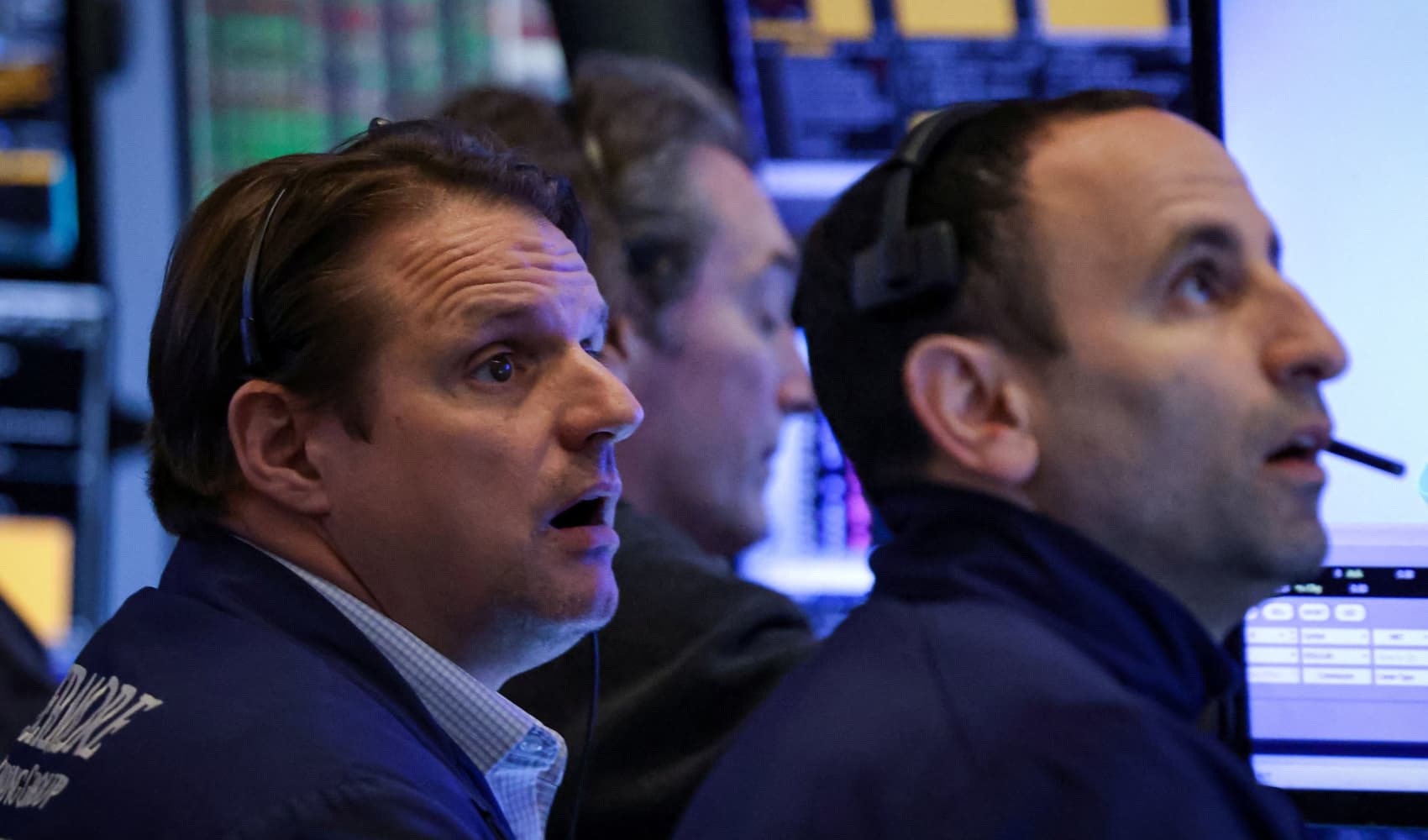Buffett's Simple Rule: Beat the Volatile Stock Market
Warren Buffett's Secret Weapon: How to Thrive in a Volatile Market
Introduction: Riding the Stock Market Rollercoaster
Investing in the stock market these days can feel like riding a rollercoaster – all those stomach-churning drops and sudden, unexpected climbs! Remember that stomach drop when the S&P 500 shed 2.4% recently? It's enough to make even seasoned investors feel a little queasy. And with talks of tariff wars and unpredictable economic policies, it's understandable if you're feeling a bit lost. But fear not! There's a beacon of hope in the form of a simple, yet powerful strategy championed by none other than the "Oracle of Omaha" himself, Warren Buffett.
Warren Buffett's "Simple Rule": What is it?
So, what is this "simple rule" everyone keeps talking about? It's not some complicated algorithm or secret stock-picking formula. It's surprisingly straightforward: Consistently invest in value stocks over the long term. Sounds easy, right? But like most simple things, it requires discipline and a clear understanding of the underlying principles.
Understanding Value Investing
What Defines a "Value Stock"?
Value investing is all about finding companies that are currently undervalued by the market. Think of it like finding a hidden gem at a garage sale. These are companies whose stock prices don't accurately reflect their intrinsic worth. They might be temporarily down due to market fluctuations, industry headwinds, or negative news, but their underlying business fundamentals remain strong.
How to Identify Undervalued Companies
Identifying undervalued companies requires some homework. You need to delve into their financial statements, analyze their business models, and understand their competitive landscape. Key metrics to look at include:
- Price-to-Earnings (P/E) Ratio: This compares a company's stock price to its earnings per share. A lower P/E ratio might indicate undervaluation.
- Price-to-Book (P/B) Ratio: This compares a company's market capitalization to its book value. A P/B ratio below 1 could suggest undervaluation.
- Debt-to-Equity Ratio: This indicates how much debt a company is using to finance its assets. A lower ratio generally suggests a stronger financial position.
Why "Long Term" Matters
The Power of Compounding
Investing isn't about getting rich quick; it's about building wealth over time. And that's where the magic of compounding comes in. Compounding is essentially earning returns on your returns. The longer you stay invested, the more your money grows exponentially. Think of it like a snowball rolling down a hill – it starts small, but it gathers momentum and size as it rolls along.
Ignoring Short-Term Noise
The stock market is full of noise. News headlines, analyst predictions, and daily price fluctuations can create a lot of anxiety and tempt you to make impulsive decisions. But Buffett's rule encourages you to ignore this short-term noise and focus on the long-term potential of your investments. Don't let fear and greed drive your decisions.
Volatility: Your Friend, Not Your Foe
Embracing Market Downturns
Volatility is an inherent part of the stock market. But instead of fearing it, Buffett sees it as an opportunity. When the market dips, and stock prices fall, it's like a sale on your favorite brands. You can buy more shares of high-quality companies at a lower price. This is often referred to as "buying the dip."
Dollar-Cost Averaging: A Smart Strategy
One way to take advantage of volatility is to use dollar-cost averaging. This involves investing a fixed amount of money at regular intervals, regardless of the stock price. This helps you to buy more shares when prices are low and fewer shares when prices are high, ultimately reducing your average cost per share.
The Importance of Patience and Discipline
Staying the Course
One of the biggest challenges of investing is staying the course, especially during periods of market uncertainty. It's tempting to sell your investments when prices are falling, but this is often the worst thing you can do. Remember, successful investing requires patience and discipline.
Avoiding Emotional Investing
Emotions can be your worst enemy when it comes to investing. Fear and greed can cloud your judgment and lead to impulsive decisions. That’s why it’s important to stick to your investment plan and avoid making decisions based on emotions.
Diversification: Spreading Your Risk
Don't Put All Your Eggs in One Basket
Diversification is a fundamental principle of investing. It involves spreading your investments across different asset classes, industries, and geographic regions. This helps to reduce your overall risk. If one investment performs poorly, the others can help to offset the losses.
Index Funds and ETFs: Easy Diversification
One of the easiest ways to diversify your portfolio is to invest in index funds or exchange-traded funds (ETFs). These funds hold a basket of stocks that track a specific market index, such as the S&P 500. This allows you to instantly diversify your portfolio across a wide range of companies.
Learning from Buffett's Success
Following His Investment Philosophy
Warren Buffett's investment philosophy is based on value investing, long-term thinking, and a focus on quality companies. By studying his investment decisions and understanding his principles, you can learn valuable lessons that can help you to build wealth over time.
Reading His Annual Letters
Buffett's annual letters to Berkshire Hathaway shareholders are a treasure trove of investment wisdom. In these letters, he shares his insights on the economy, the stock market, and his investment strategies. Reading these letters can provide you with a deeper understanding of his investment philosophy.
Common Mistakes to Avoid
Chasing Hot Stocks
One of the biggest mistakes investors make is chasing hot stocks or trendy investments. These are often overvalued and driven by hype rather than fundamentals. Investing in these stocks can be risky and lead to significant losses.
Trying to Time the Market
Another common mistake is trying to time the market. This involves trying to predict when the market will go up or down and buying or selling stocks accordingly. However, studies have shown that it is nearly impossible to consistently time the market. It's better to focus on long-term investing and dollar-cost averaging.
Building a Solid Financial Foundation
Beyond Investing: Personal Finance Basics
While investing is important, it's also crucial to have a solid financial foundation. This includes:
- Creating a budget and tracking your expenses.
- Paying off high-interest debt.
- Building an emergency fund.
- Saving for retirement.
Seeking Professional Advice
If you're unsure where to start or need help with your investment strategy, consider seeking professional advice from a financial advisor. A financial advisor can help you to assess your financial situation, set goals, and develop an investment plan that is tailored to your needs.
Real-World Examples of Buffett's Strategy
Berkshire Hathaway's Success
Berkshire Hathaway, Buffett's company, is a testament to the power of his investment strategy. Over the years, Berkshire has generated impressive returns by investing in a diversified portfolio of high-quality companies. This success is a direct result of Buffett's adherence to his "simple rule."
Case Studies of Value Investments
Looking at specific examples of Buffett's value investments can provide valuable insights. For example, his investment in Coca-Cola, American Express, and Apple have all proven to be highly successful over the long term. These companies were undervalued at the time of his initial investment but have since grown significantly.
Is Buffett's Rule Right for You?
While Buffett's "simple rule" has proven to be highly successful for him and many others, it's important to consider whether it's the right strategy for you. It requires a long-term perspective, patience, and a willingness to ignore short-term market fluctuations. If you're comfortable with these things, then Buffett's rule could be a valuable tool for building wealth.
Conclusion: Your Path to Financial Success
Warren Buffett's "simple rule" isn't about chasing quick riches; it's about building wealth steadily over time through value investing. By focusing on undervalued companies, embracing volatility, and staying disciplined, you can navigate the stock market's ups and downs and achieve your financial goals. Remember to diversify, avoid emotional decisions, and always keep the long term in mind. Your journey to financial success starts with a single step – understanding and implementing Buffett's timeless principles.
Frequently Asked Questions (FAQs)
Q: What if I don't know how to analyze financial statements?
A: Don't worry! There are plenty of resources available online and in libraries to help you learn. Start with the basics and gradually build your knowledge. You can also consider using stock screeners that filter companies based on key financial metrics.
Q: Is it too late to start investing if I'm already in my 40s or 50s?
A: Absolutely not! It's never too late to start investing. While starting earlier gives you more time to benefit from compounding, you can still make significant progress by investing consistently and strategically, even later in life.
Q: How much money do I need to start investing?
A: You can start investing with relatively small amounts of money. Many brokers offer fractional shares, which allow you to buy a portion of a share of stock. You can also invest in low-cost index funds with small initial investments.
Q: What's the difference between stocks and bonds?
A: Stocks represent ownership in a company, while bonds are loans that you make to a company or government. Stocks are generally riskier than bonds, but they also offer the potential for higher returns. Bonds are generally less risky but offer lower returns.
Q: How often should I check my investments?
A: It's important to monitor your investments periodically, but you don't need to check them every day. Checking them too frequently can lead to emotional decision-making. A good rule of thumb is to review your portfolio at least once a quarter to ensure that it's still aligned with your goals.




